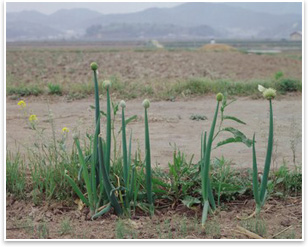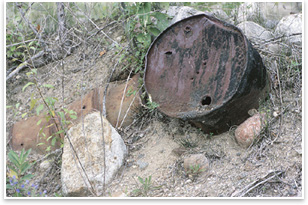Brownfields Practice Guides Now Available
Summary: The Institute of Brownfields Professionals announced on July 18 that a series of Practice Guides produced by the Center for Environmental Policy and Management at the University of Louisville is now available and ready to be downloaded free of charge. The guides are intended to provide clear, practical advice to urban and regional planners and policymakers about the redevelopment of brownfields.
 Practice Guide 1: Public Strategies for Cost-Effective Community Brownfield Redevelopment Practice Guide 1: Public Strategies for Cost-Effective Community Brownfield Redevelopment
will assist economic development organizations, developers, and local government agencies in understanding the brownfield development process. The Guide demystifies the tangle of legal, technical, and financial issues involved. Workable approaches for development are identified, as well as best practices that lead to successful projects.
Practice Guide 2: Managing Growth with Fairness: The Regulatory Takings Test of Smart Growth Policies
offers an introduction and review of current federal and state takings law as it affects growth management and smart-growth policy tools. Taking a case-by-case look at both the takings and planning legislation and implementation regulations, the Guide applies the regulatory takings test to the current growth situation and offers suggestions for developing land use policies that address both sprawl and regulatory fairness. Keeping in mind that state law governs most land use regulations, an appendix of this document reviews land use cases specific for each of the eight states in EPA Region IV.
Practice Guide 3: Closing the Brownfield Information Gap: Some Practical Methods for Identifying Brownfields
presents a method for communities to address the brownfield information gap, allowing them to bypass individual property owner objections through a creative combination of existing formal and informal government records. Using assumptions based on the EPA's official definition of a brownfield, environmental, land use, and property tax information can be collected on an individual property basis. This allows communities to develop a comprehensive brownfields profile that will help reduce the stigma effect of suspected brownfields and will further community-wide redevelopment efforts.
 Practice Guide 4: Utilizing Environmental Insurance for Brownfield Redevelopment Practice Guide 4: Utilizing Environmental Insurance for Brownfield Redevelopment
provides a briefing for state and local development officials to guide their deliberations about whether to pursue insurance coverage as part of their approach to reuse of brownfield sites. In the event that officials decide to pursue coverage, the guide offers insight on how to assure that the appropriate tools are obtained from the insurance industry.
Practice Guide 5: Dealing with Growth: Alternatives to Large Lot Zoning on the Urban Fringe
examines the current literature on the subject and presents a case against large-lot subdivisions in easily understandable terms. Alternative land use policies, such as clustering and designated growth areas, are suggested. These alternatives may generate the desired low overall density at a lower cost and with greater societal benefit, while not undermining developers' capability to build new high quality housing at a profit.
Practice Guide 6: Grayfields: The New Horizons for Infill and Higher Density Regeneration
looks at grayfields as a special class of abandoned areas for which "best practices" in regeneration and re-densification efforts can begin to be identified. Using land that has been used previously saves undeveloped land further from the urban core from development. Several barriers to reuse, such as typical local zoning and land use, are identified. Lessons from grayfields that are getting attention from developers and local governments are examined. These lessons can be applied to other sites and areas that are also prospects for more infill activity and higher density regeneration. Both infill (reusing previously developed land) and higher density regeneration (helping to revitalize urban cores) can be tools to prevent sprawl.
 Practice Guide 7: Construction & Demolition Debris Recycling for Environmental Protection and Economic Development and Best Practices Appendix Practice Guide 7: Construction & Demolition Debris Recycling for Environmental Protection and Economic Development and Best Practices Appendix
defines C&D wastes, identifies barriers and opportunities for recycling and reusing these, and provides easy to understand information about how to assess construction and demolition waste streams, current trends in reuse and recycling C&D debris, as well as innovative trends in recycled products with potential markets. Interventions for local governments to promote C&D reuse and recycling are reviewed. Resources such as federal and state programs supporting C&D recycling, publications, and relevant associations are provided. A separate Best Practices Appendix highlights how some communities have taken these concepts and used them to promote economic development through business creation and employment generation.
Practice Guide 8: Brownfields: Historic Preservation as a Redevelopment Option explores reasons for historic preservation and funding sources that are available at the federal, state, and local levels for a brownfield/historic preservation redevelopment project. Case studies of successful rehabilitation and renovation projects are provided.
Practice Guide 9: Contaminated Properties: History, Regulations, and Resources for Community Members
offers a background history on federal and state laws and regulations. The guide also explains how these laws and regulations can be used to promote redevelopment and how would-be redevelopers can work with the requirements. The objective is to demonstrate to individuals, businesses, communities, and public officials the net economic benefits that can be gained from redeveloping these contaminated properties.
 Practice Guide 10: Brownfield Redevelopment: Make it Possible! Practice Guide 10: Brownfield Redevelopment: Make it Possible!
offers some insights into non-brownfield specific financing mechanisms and examples where these have been successfully used.
Practice Guide 11: Brownfields Program Placement in Local Governments
will help local officials answer the question "Where do I put my brownfields program?" by offering some insights into the impact that the placement of a program can have on that program and by outlining some examples of placements that have had successes and failures.
Practice Guide 12: Public Involvement: How Active Participation in Environmental Issues and Decisions Makes Economic Sense and Broadens the Knowledge Base
provides a brief summary of the benefits and costs of public involvement for environmental programs or plans and agencies involved. Key points to consider when initiating public involvement are listed and illustrated with several case studies. A list of useful resources, including books and Web sites, is given at the end.
|



 Practice Guide 4:
Practice Guide 4: Practice Guide 7:
Practice Guide 7: Practice Guide 10:
Practice Guide 10: